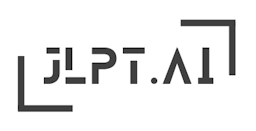

N1
音読み:sai
訓読み:wazawa.i, wazawai
サイsai
わざわ.いwazawa.i
わざわいwazawai
Disaster, calamity
Imagine a fire raging and causing destruction. People are in distress, symbolizing the impact of a disaster or calamity.
The kanji '災' appears in the N1 level of the JLPT. It may be tested in various sections, including vocabulary, kanji, and reading comprehension. Understanding its readings and meanings in context is important for navigating these sections successfully.
地震は大きな災害です。
An earthquake is a major disaster.
じしんはおおきなさいがいです。
jishin wa ookina saigai desu.
彼の家は台風の災害にあった。
His house was hit by a typhoon disaster.
かれのいえはたいふうのさいがいにあった。
kare no ie wa taifuu no saigai ni atta.
災害に備えて、応急処置を学んでおいた方がいい。
It's better to learn first aid in preparation for disasters.
さいがいにそなえて、おうきゅうしょちをまなんでおいたほうがいい。
saigai ni sonaete, oukyuushochi o manande oita hou ga ii.